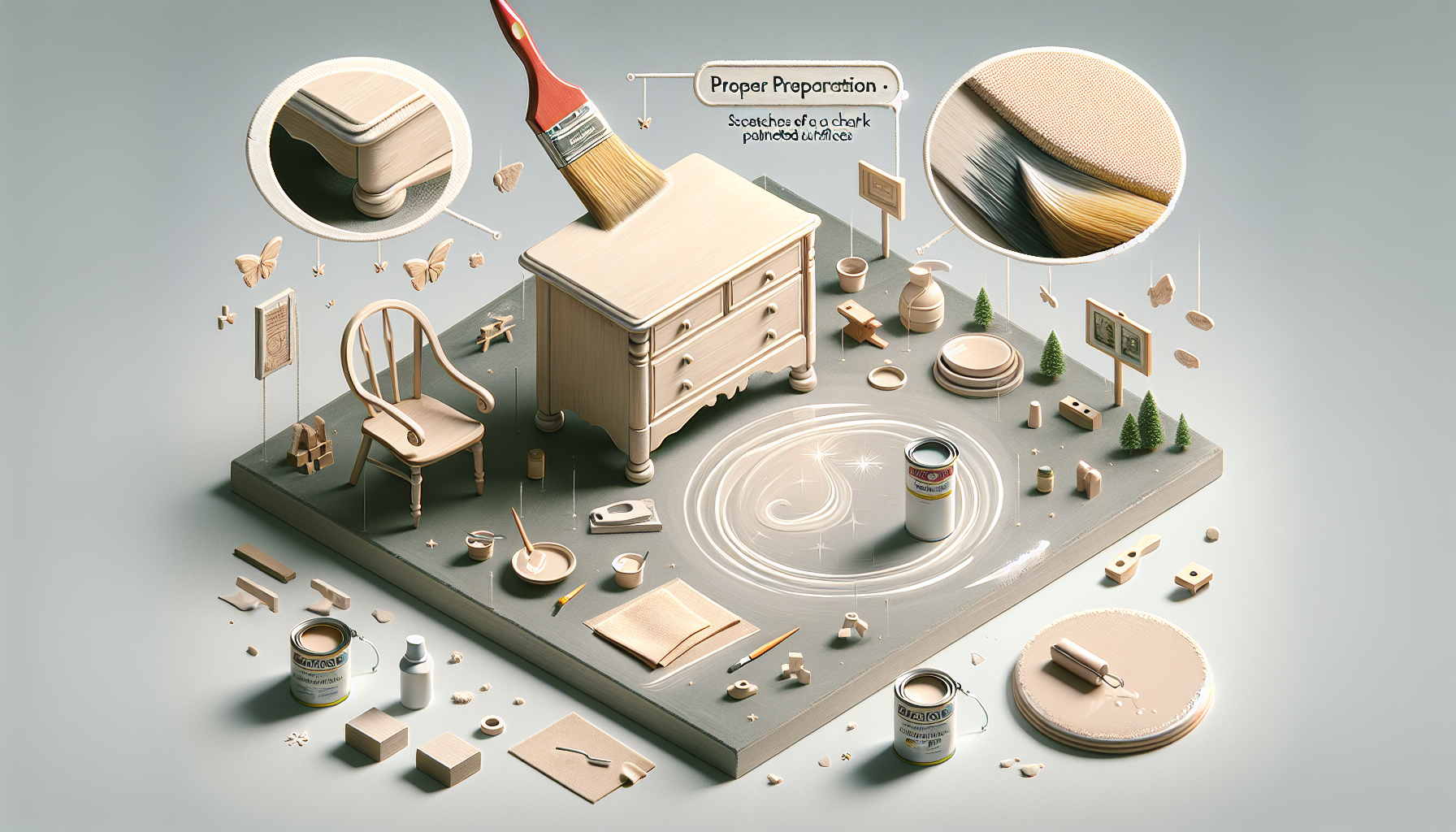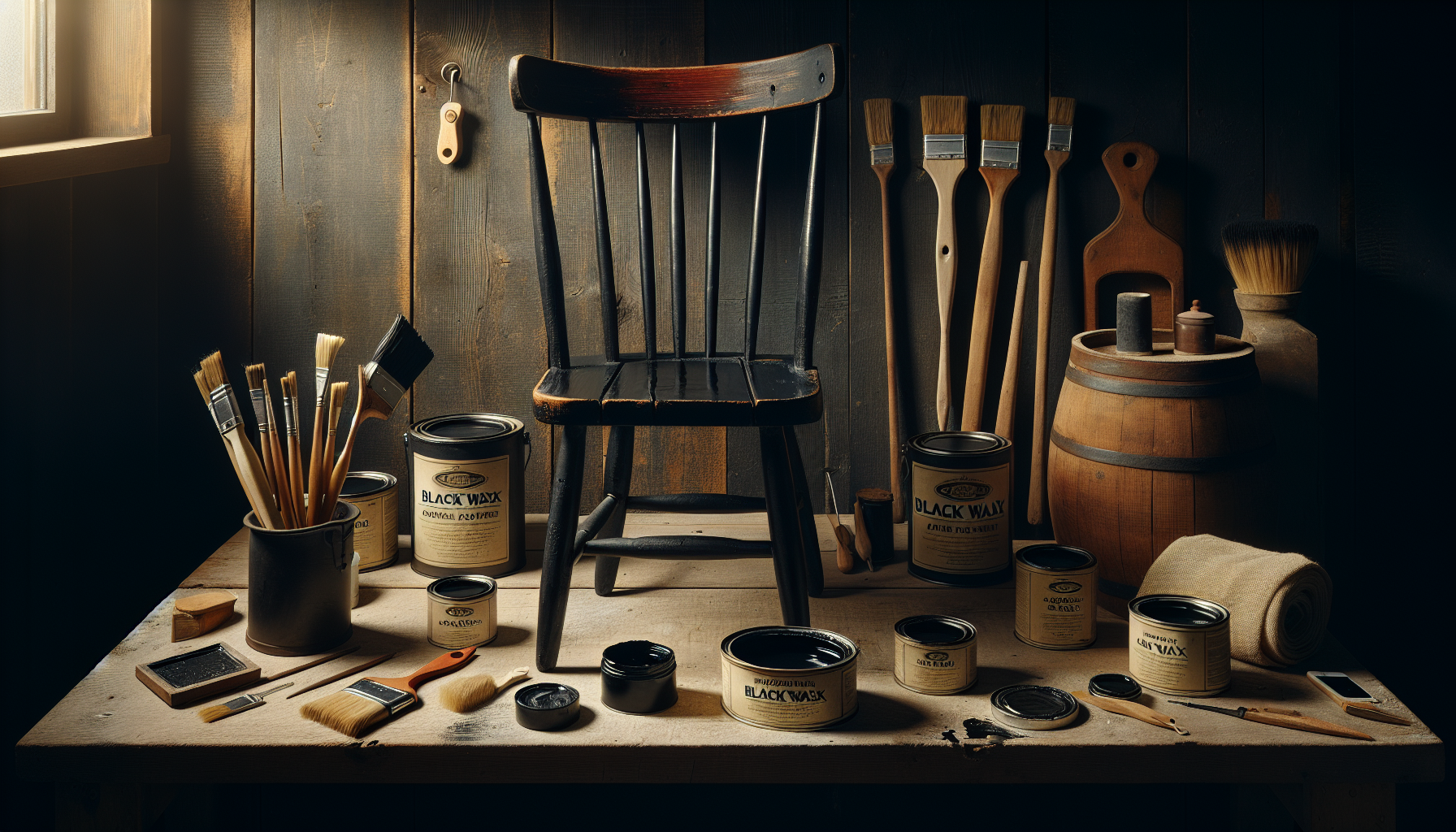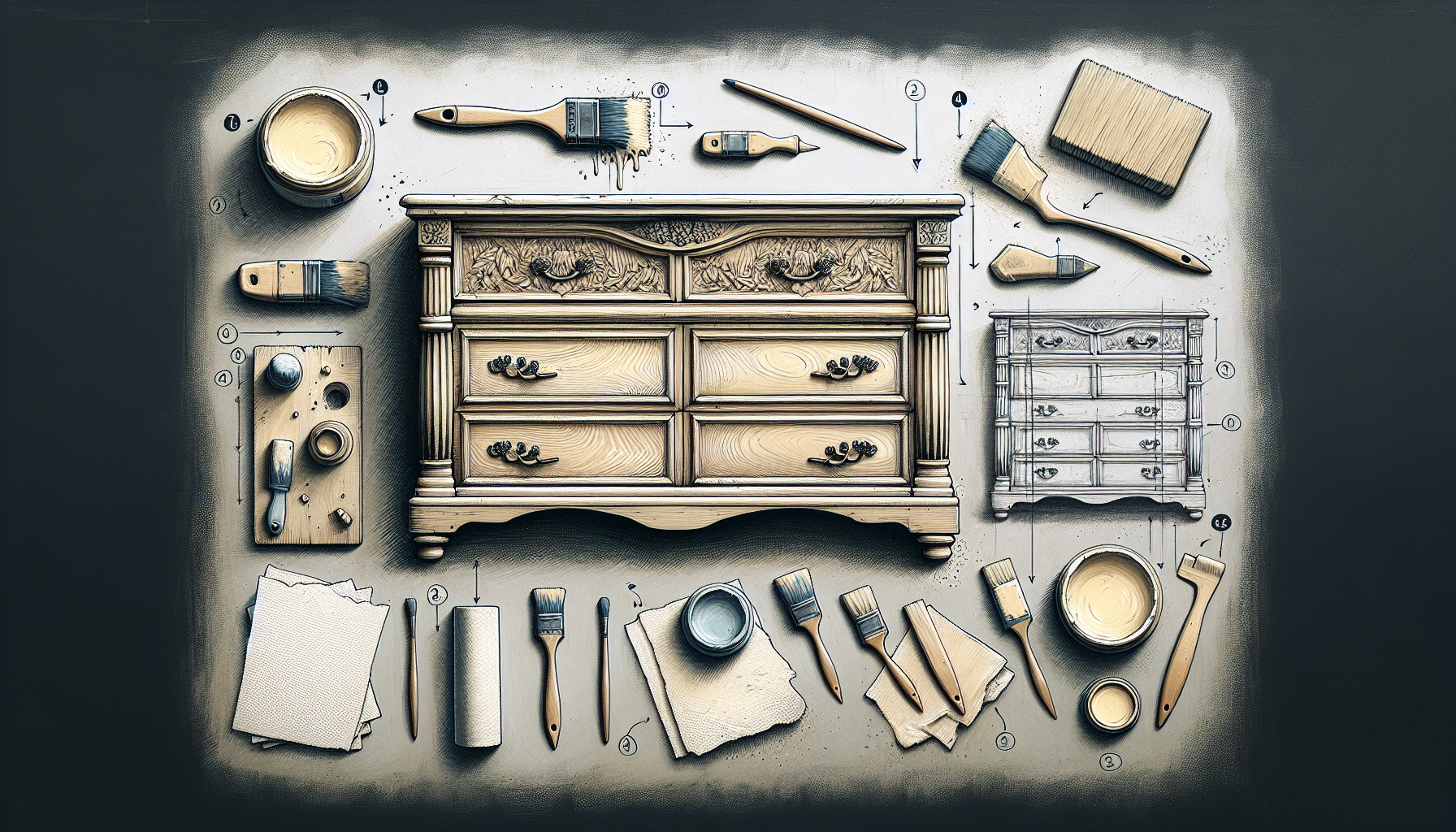In this article, you will discover effective techniques to prevent chalk paint from scratching. Chalk paint has gained popularity due to its versatility and ability to transform the appearance of furniture and accessories. However, it tends to be more delicate and prone to scratching compared to other types of paint. By implementing the tips and strategies outlined in this article, you can ensure that your chalk-painted surfaces maintain their pristine finish and remain scratch-free for an extended period. Whether you are an experienced DIY enthusiast or a novice painter, these insights will equip you with the knowledge needed to achieve beautiful and long-lasting results.
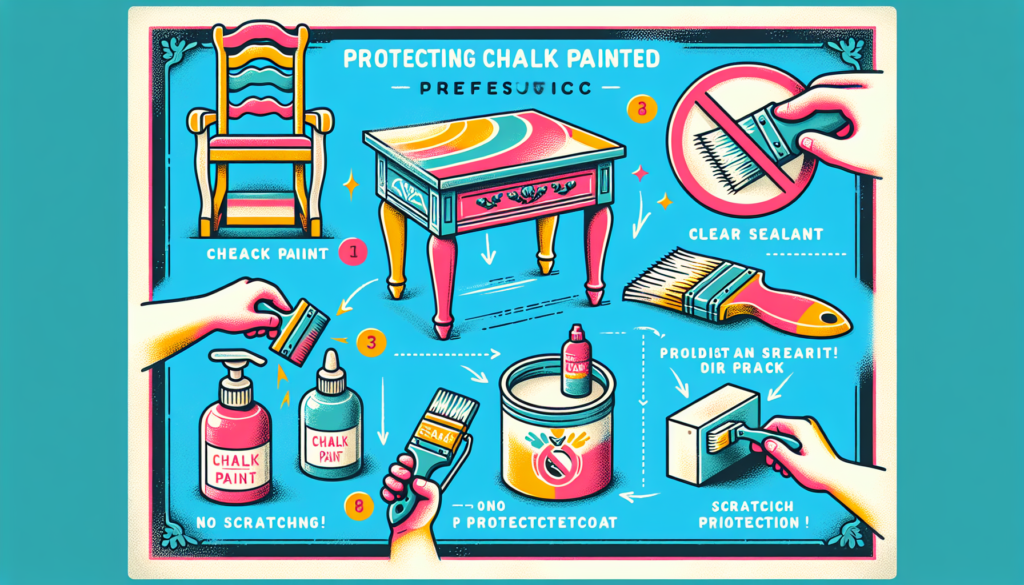
Choose the Right Type of Chalk Paint
When it comes to selecting the right chalk paint for your project, there are a few factors you should consider. One option to consider is water-based chalk paints. These paints are easy to work with, dry quickly, and offer a smooth finish. They are also low in VOCs, making them a safer choice for indoor use. Another aspect to keep in mind is the quality of the paint. Opting for high-quality chalk paints ensures better coverage, durability, and overall performance. Look for paints that have a reputation for their high pigmentation and a smooth, matte finish. Lastly, consider acrylic or latex-based chalk paints, as they offer excellent adhesion to various surfaces and are resistant to peeling or fading over time.
Prepare the Surface Properly
Before applying chalk paint, it is crucial to prepare the surface properly to ensure a long-lasting and flawless finish. Start by cleaning the surface thoroughly to remove any dirt, dust, or grease that may interfere with the paint’s adhesion. A mixture of mild soap and water or a specialized cleaner can be used for this purpose. Additionally, sanding the surface will help create a smooth and even base for the paint. Smooth out any rough areas or imperfections to ensure a seamless application. If you’re working with a particularly challenging surface, applying a primer or sealer before painting can enhance adhesion and prevent any bleed-through.
Apply Multiple Thin Coats
When applying chalk paint, it’s essential to achieve a smooth and even finish. To achieve this, it is recommended to use multiple thin coats rather than a single thick coat. This approach helps prevent visible brushstrokes and allows for better control over the final outcome. Make sure to avoid applying thick, heavy brushstrokes, as this can lead to an uneven appearance and longer drying times. Additionally, be patient and allow each coat to dry sufficiently before applying the next. This will help prevent any smudging or damage to the underlying layers and ensure a more durable finish. Depending on the desired coverage and opacity, applying additional coats may be necessary.
Use the Right Tools and Techniques
Choosing the appropriate tools and techniques can make a significant difference in the outcome of your chalk paint project. High-quality brushes or rollers are essential for achieving a smooth and professional finish. These tools will allow for better control over the paint application and minimize the appearance of brushstrokes. When applying paint, use light pressure to avoid pushing the paint around and creating streaks or uneven surfaces. For larger projects or when aiming for an exceptionally smooth finish, consider using a sprayer. A paint sprayer can evenly distribute the paint and eliminate brushstrokes entirely, resulting in a flawless and professional appearance.
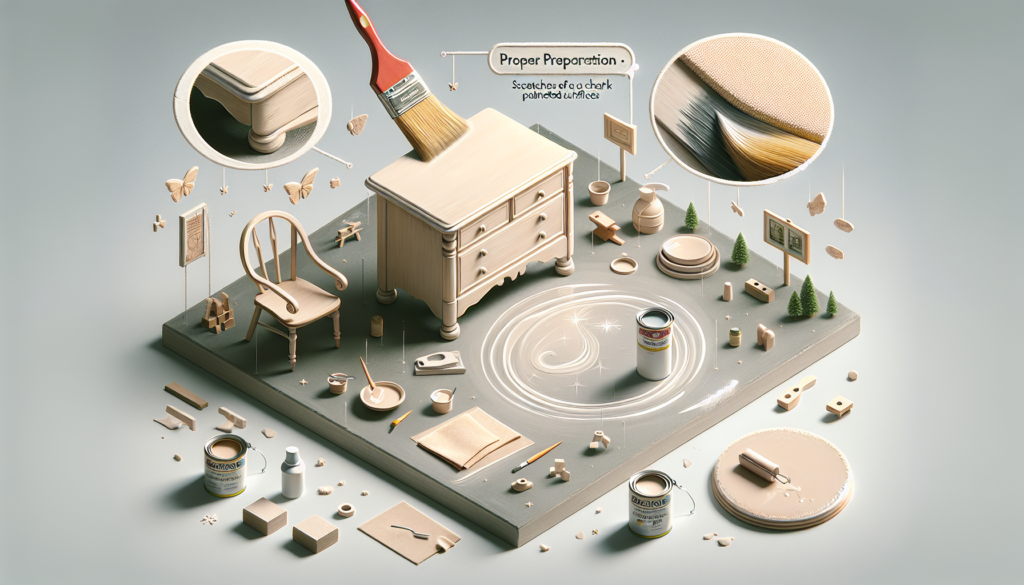
Seal the Chalk Paint
To protect your chalk paint and ensure its longevity, applying a sealant is crucial. Choosing the right product for sealing is essential to achieve the desired level of protection and finish. One popular option is to use clear wax as a sealer. Wax provides a soft, velvety finish and enhances the chalky matte appearance of the paint. Another option to consider is using polycrylic or polyurethane sealers. These sealers offer a more durable and protective finish, making them suitable for high-wear areas or outdoor furniture. Before applying the sealant, make sure the paint is fully dry to avoid any smudging or damage to the paint’s surface.
Avoid Excessive Handling
While chalk paint is known for its durability, it is still important to avoid excessive handling. Avoid touching the painted surface too much, as constant contact can lead to wear and premature scratching. Instead, use furniture wax for regular maintenance. Applying a thin layer of furniture wax will provide additional protection and help maintain the paint’s integrity. Additionally, consider using protective covers on furniture or surfaces that are frequently used or exposed to potential damage. Protective covers, such as tablecloths or coasters, can prevent scratches, spills, and other forms of damage, ensuring that your chalk paint remains in pristine condition.
Practice Proper Maintenance
In order to keep your chalk paint looking its best, it is important to practice proper maintenance. Avoid using harsh cleaning agents that can potentially strip or damage the paint’s surface. Instead, opt for gentle cleaning methods such as using a microfiber cloth or a soft brush to remove dust and debris. Clean spills immediately to prevent staining or seeping into the paint layers. Regularly dust and wipe the surface to maintain its appearance and prevent the buildup of dirt or grime. By practicing proper maintenance, you can ensure that your chalk paint retains its vibrant color and smooth texture for years to come.
Consider Distressing Techniques
Distressing is a popular technique in which the surface of the chalk paint is intentionally aged or worn to achieve a vintage or rustic look. There are several methods to accomplish this effect. One option is to purposely age the surface using techniques such as sanding, scraping, or using a wire brush. These techniques help create an authentic and weathered appearance, adding character to your furniture or decor. Another method is to use distressing tools specifically designed for this purpose. These tools typically have a rough or abrasive surface that can be applied to the paint to create controlled scratches or distressed areas. Lastly, sandpaper can be used to distress the paint by gently rubbing it against the surface. This method allows for precise control over the level of distressing desired.
Protect with Topcoat or Varnish
To provide an extra layer of protection and durability to your chalk paint, consider applying a topcoat or varnish. A topcoat serves as a protective layer that helps guard against scratches, stains, and general wear and tear. Choose a clear topcoat that is compatible with chalk paint, ensuring it won’t alter the paint’s color or finish. For even greater protection, a durable varnish can be used. Varnishes are specifically formulated to provide a tough and long-lasting finish, making them suitable for high-traffic areas or outdoor furniture. Applying multiple coats of the topcoat or varnish can further enhance the durability and lifespan of your chalk paint.
Recoat and Touch-Up as Necessary
Over time, it is natural for chalk paint to experience some wear and tear. To maintain its appearance and prolong its lifespan, regularly monitor and touch-up any scratched or damaged areas. Keep some extra paint on hand in the event that touch-ups are necessary. With a small brush or roller, carefully apply the paint to the affected areas, ensuring a seamless blend with the existing paint. Tackling any imperfections promptly will help prevent them from worsening and maintain the overall integrity of the chalk paint. Additionally, periodically inspect and maintain the chalk paint, looking for any signs of fading, peeling, or damage, and address any issues promptly to keep your paint looking its best.
By following these guidelines and taking the necessary steps to protect and maintain your chalk paint, you can enjoy the beauty and longevity of your painted surfaces for years to come. From choosing the right paint to mastering the application techniques and proper maintenance, you can create stunning and durable finishes that will enhance your furniture, decor, or any other project you undertake. With the right tools, techniques, and care, your chalk paint can withstand the test of time and retain its original beauty.
